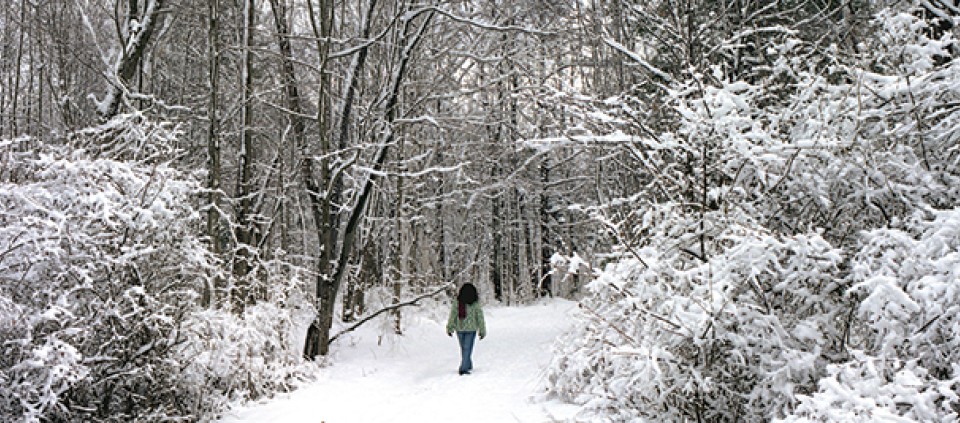Resilience and the Art of Breaking Routine

by Janet Arnold-Grych
Routine has a lot going for it. It allows critical aspects of our lives to flow more efficiently. It provides comfort and safety. It tethers us to the familiar while we reach for the unknown. But too much routine can whitewash experience, allowing the big things and the little things, the surprises and delights, to slip by unnoticed. That’s why we need the unexpected—to clean the lens of experience and recalibrate our awareness. Part of embracing the unexpected is simply being open to what we find and what finds us. Another is planning for it.
My dear friend Tom is a yogi, former college administrator, and community volunteer. He's also an expert at planning the unexpected. For years, he and a small band of friends have created "travel mysteries," most within the city of Milwaukee. While one of the group members organizes the event, the rest receive clues about the theme of the day and instructions on what to wear and where to meet. They've done this dozens of times. Imagine re-encountering your community over and over. Could you find a freshness you’d missed—30 times before? Could you embrace every mystery offered to you, even if it wasn’t quite your cup of tea?
I got to thinking, what if I attempted to reframe my day as a mystery tour? I wouldn’t have to like everything I encountered or arranged, but I would need to commit to injecting change and welcoming it with a sense of openness and curiosity. I planned a few non-routine moves. I took a different route to work. When I stopped for coffee, I took in the vibe and not my cell phone. At work, I sought out colleagues rather than my chair, and made time to read an article on creativity. I felt energized.
Breaking out of routine by consciously substituting “B” for “A” may seem inconsequential. Yet even a small shift can hold importance, enabling us to see things differently and advance toward our goals. Clinical psychologist, author, and inspirational speaker Maria Sirois, a Kripalu faculty member, sees value in those small steps. “In order to change anything, we have to change something,” she says. “So if we seek a happier, more meaningful life, a healthier body, a more resilient attitude or any other change, we have to change something. There is something else important to remember: when we step outside our comfort zone, we often surprise ourselves with our capacity. Life becomes bigger, and we become bigger in it.”
On my “mystery day,” I was feeling this dynamism in action. But when the afternoon included a mystery not of my planning—a project shift and the obsolescence of hours of work I had done—I did not cheer. This was not my desired mystery experience.
There’s no guarantee that the unexpected, the non-routine, will come wrapped in ribbons. As Maria says, “Our efforts are not always going to work or to be pleasant. That is the nature of attempting something new. The greatest attitude shift we can carry into the path of transformation is to be ready and willing to learn anyway. When we hold this perspective, then all of our experiences have the potential to enable us to grow—not simply the ones that worked out just right.”
Changing my perspective on the project wasn’t as easy as flipping a switch, but my “mystery day” orientation did enable me to find a new view faster. Stepping out of routine fed a greater agility that enabled me to more easily embrace the situation. I became bigger. I was even able to find some measure of humor in the circumstances and, while still not cheering, be open to what I might learn in this next iteration. Creating and welcoming opportunities for a new view open us up to greater experience. It softens expectation for what “should be" and emboldens us to reach for the new rather than cling to the known. And it starts by changing something.
When routine, whether in action or attitude, becomes too comfortable or constrictive, it’s often a clue we’re limiting ourselves. There's an invitation waiting—to look again and discover a new spaciousness. It's here, in this spaciousness, that we’re better able to notice the big things and the little things. And when we gather the courage to create change, we find a freshness that keeps us fully engaged in the unfolding mystery.
Find out about programs with Maria Sirois at Kripalu.
Janet Arnold-Grych is a yoga teacher and writer whose work has been published in Elephant Journal, Huffington Post, Third Coast Digest, and other outlets. She’s also a marketing manager for a Fortune 200 company.
© Kripalu Center for Yoga & Health. All rights reserved. To request permission to reprint, please e-mail editor@kripalu.org.